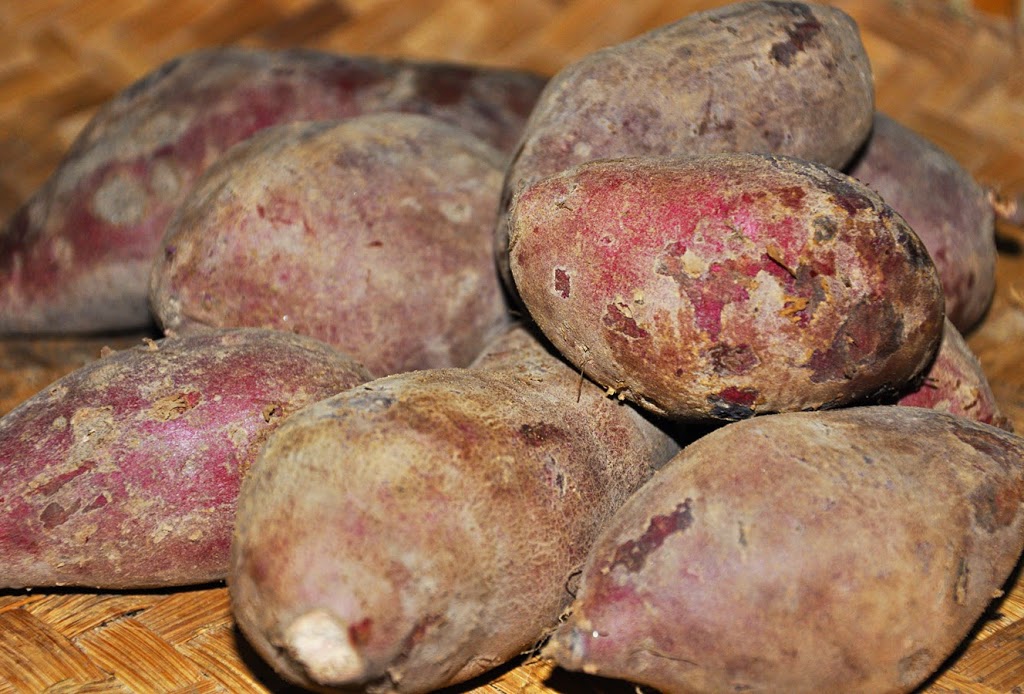By November of 1944, food rations to the over 3000 Westerners interned by the Japanese at Santo Tomas had dwindled to a little bit of watery rice every day. The prisoners were still able to supplement their diets with talinum and camote.
This is what talinum looks like.
It’s a green. The young leaves can be eaten raw, while the larger leaves can be cooked, much like spinach. It doesn’t have a very strong taste. Because of this, the internees added garlic to their talinum – lots and lots of garlic, apparently. Whew.
They still eat this in the Philippines. I found a recipe for talinum and cucumber salad. Make a salad of the talinum leaves and chopped cucumbers. Drizzle with lemon juice, olive oil, salt and pepper.
This is camote. English speakers know it as sweet potatoes. The skin is a little more purple, but the flesh is the same orange color.
The Filipinos like to slice the camote, dip the slices in sugar, then fry them. They’re skewered and served as a popular street food. Of course, at Santo Tomas in those days, there was no sugar and no cooking oil. One woman took to frying her food in her face cream. Nothing went to waste, either. They also cooked the greens – with plenty of garlic, of course!
Still, by November of 1944, people were dying at an average of 1-2 per day of beri-beri and other diseases. Starvation was a real problem and get worse with each passing day. Liberation was still three months away.
So, if you had to try either of these foods, which would you choose?


